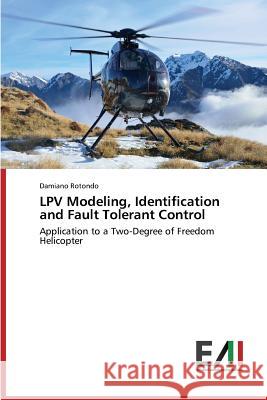Lpv Modeling, Identification and Fault Tolerant Control » książka
Lpv Modeling, Identification and Fault Tolerant Control
ISBN-13: 9783639729795 / Angielski / Miękka / 2014 / 232 str.
This book presents the LPV (Linear Parameter Varying) modeling, identification and control with fault tolerance mechanisms of a Twin Rotor MIMO System (TRMS). The non-linear model of the TRMS is transformed into a quasi-LPV model and then approximated in a polytopic way. The model parameters are calibrated by means of a non-linear least-square identification approach. Once the calibrated model is obtained, a simulator is built and validated against real data. Using the LPV Linear Matrix Inequalities (LMI) pole placement approach, an LPV observer and an LPV controller are designed and tested both in simulation and on the real system in order to prove its effectiveness and performance. Finally, a Fault Tolerant Control (FTC) strategy using virtual sensors and virtual actuators is applied in an LPV way. In order to implement these approaches, fault estimation is required. To this aim, a method to identify the faults is implemented formulating a parameter estimation problem. The methodology is tested both in simulation and on the real system, showing its effectiveness and its limits.
This book presents the LPV (Linear Parameter Varying) modeling, identification and control with fault tolerance mechanisms of a Twin Rotor MIMO System (TRMS). The non-linear model of the TRMS is transformed into a quasi-LPV model and then approximated in a polytopic way. The model parameters are calibrated by means of a non-linear least-square identification approach. Once the calibrated model is obtained, a simulator is built and validated against real data. Using the LPV Linear Matrix Inequalities (LMI) pole placement approach, an LPV observer and an LPV controller are designed and tested both in simulation and on the real system in order to prove its effectiveness and performance. Finally, a Fault Tolerant Control (FTC) strategy using virtual sensors and virtual actuators is applied in an LPV way. In order to implement these approaches, fault estimation is required. To this aim, a method to identify the faults is implemented formulating a parameter estimation problem. The methodology is tested both in simulation and on the real system, showing its effectiveness and its limits.











